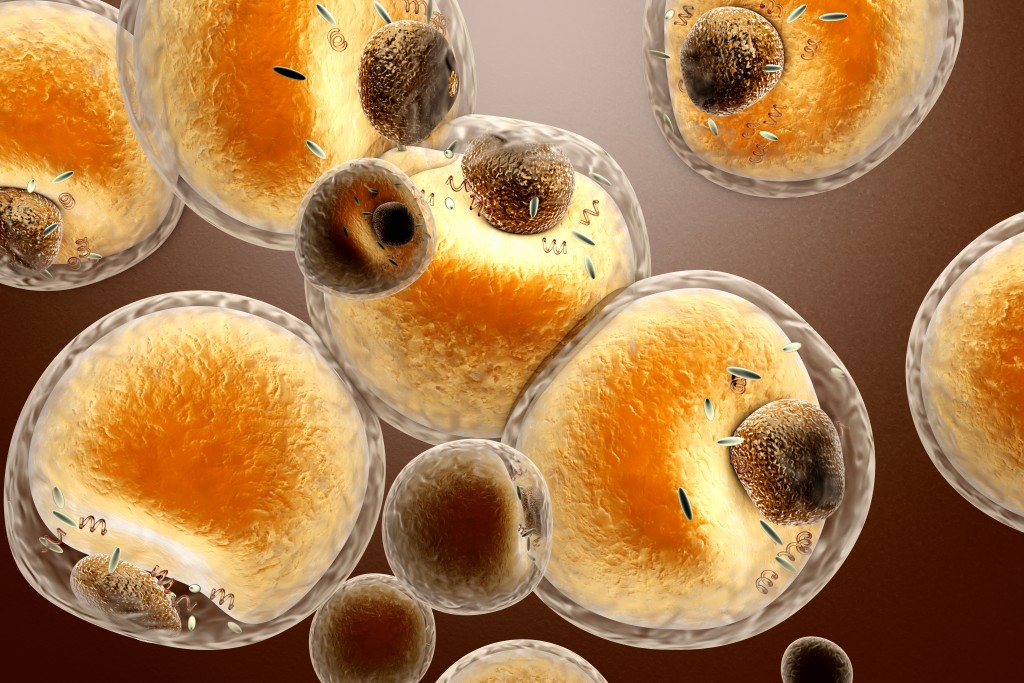About the project
The nuclear envelope regulates gene expression through dynamic interactions with chromatin. It consists of a double nuclear membrane, nuclear pores and the nuclear lamina, a meshwork of A-type lamins (LMNA/C) and B-type lamins (LMNB1, LMNB2). Mutations in LMNA cause laminopathies, including lipodystrophies.
Familial partial lipodystrophy of Dunnigan type (FPLD2), caused by the host-spot LMNA p.R482W mutation, affects adipose tissue in a fat depot-specific manner and leads to severe metabolic disorders.
Ongoing research
- Molecular regulation of upper vs. lower body adipose tissue expansion
- Role of LMNA on genome conformation and gene regulation in adipose stem cells
- Impacts of lipodystrophic LMNA mutations on spatial genome organization and function
Outcomes/Recent findings
- Lipodystrophic LMNA mutation deregulates T/Brachyury and early vascular differentiation gene networks (Briand, Guénantin et al. 2018 Hum Mol Genet 27, 1447-1459)
- Lipodystrophic LMNA mutation deregulates epigenetic and spatial conformation of anti-adipogenic MIR335 locus, leading to impairment of adipose differentiation (Oldenburg et al. 2017 J Cell Biol 216, 2731-2743)
- Lipodystrophic LMNA mutation alters radial positioning of loci in patient cells (Paulsen et al. 2017 Genome Biol 18, 21)
- Patterning of LMNA LADs by domains of histone H2B modified by the nutrient-sensing modification N-acetylglucosamine (H2B-S112GlcNAc), linking chromatin topology to metabolism (Rønningen et al 2015 Genome Res 25, 1825-1835)
- Deregulation of Fragile X-related protein 1 by a lipodystrophic LMNA mutation leads to induction of myogenic gene expression in pre-adipocytes (Oldenburg et al 2014 Hum Mol Genet 23, 1151-1162)
- Dynamic association of LMNA with gene promoters during adipose differentiation (Lund et al. 2013 Genome Res 23, 1580-1589)
Funding
The University of Oslo, The Research Council of Norway, South-East Norway Regional Health Authorities
Collaborations
- Jøran Hjelmesæth and Jens Hertel, Morbid Obesity Center, Vestfold Hospital Trust, Tønsberg, Norway
- Yvonne Böttcher, Institute of Clinical Medicine, Oslo University Hospital and University of Oslo, Norway
- Corinne Vigouroux, Hôpital Saint Antoine, INSERM, Paris, France
- Fredrick Karpe, Oxford Centre for Diabetes, Endocrinology and Metabolism (OCDEM), University of Oxford, UK
- Anna Kostareva, Almazov Research Center, St. Petersburg, Russia
